Egyptian wall paintings and relief art
Amenhotep III Representation at Karnak Temple Complex, Luxor
The extent to which the ancient history of Egypt was recorded by their artists is remarkable. Ancient Egyptian art displays a vivid representation of the Egyptian’s lifestyle, spiritual rituals and belief systems. The artists weren’t concerned with representing the world with any realism or having a sense of depth in their art. The Egyptian art was primarily concerned, above all, with ensuring the continuity of the universe, the gods, the king and the people.The artists therefore depicted things not as they saw them but as idealized symbols intended to be more significant and enduring than was otherwise possible in the real world.
Many of the fundamentals of Egyptian art were established at the very beginning of Egyptian history and changed little over time. Subject matter also remained relatively unchanged over long periods of time. However, Egyptian art did not remain completely static over the three thousand years of pharaonic history. Despite the limited repertory of subject matter, Egyptian artists valued variation and avoided producing exact copies of the same forms. Essentially though the human figure was a composite with the face, limbs, waist and buttocks shown in profile, while the chest and shoulders were in full view facing the viewer as were one eye and an eyebrow.
Pillar relief – Kom Ombo Temple
The temple religious ceremonies were accurately depicted in their art ensuring their preservation in the future and reinforcing the recollection of royal deeds. Art portrayals of offering gifts were an act of reverence to their Gods, an affirmation of abundance and it also meant these items would be available in the next world. The images of protective deities found in houses, palaces and temples were created as powerful shields against the malign forces of the universe.
Great emphasis was placed on decorating tomb walls with reliefs or painted scenes to ensure the perpetuation of life and tradition. Symbolism had an important role in their art, ranging from the pharaoh’s regalia (symbolizing his power to maintain order) to the individual symbols of Egyptian gods and goddesses. The highly symbolic hieroglyphics with more then 700 symbols was omnipresent in their art, appearing on both statues and wall reliefs.The hieroglyphic texts within any scene typically formed an integral part of the whole composition.
Most of the walls of the temples and palaces were decorated with art, either painted on a flat surface or employing sculptured relief. This could have been a raised relief where the background was cut away or a sunken relief where the figures were cut back to be lower then the background which was more suitable in bright light. The more important artworks featured sculptured reliefs. Egyptian art used hierarchical proportion, where the size of figures indicated their relative importance.The ultimate destination for Ancient Egyptians was the ‘great garden’, the Elysian fields of Osiris. Images of the god Osiris were popular and added to tomb walls, either painted or carved, to invoke the protective and guiding spirit of Osiris. All the Egyptian Gods had consistent representation and carving their Gods into the living rock of the tomb gave it a tangible form which became an object, where it was believed the deities could manifest a presence.
The entry to the tomb of Pashedu is flanked by spectacular Anubian guardians
17th Dynasty Egyptian Perfume Vessel in the Shape of Two Trussed Ducks-found in upper Egypt(Thebes)
Sunken relief of Thoth – Luxor temple
photo – John Bodsworth
Part of the Book of the Dead from the tomb of a scribe called Nebqed from the 18th Dynasty. The whole papyrus is over 6 metres long.
Louvre, Paris
A column with the face of Hathor. From the ruins of the temple of Bastet at Bubastis from the time of Osorkon II
Louvre Museum
Lamenting Women, from the tomb of Ramose, c. 1411-1375 BCE.
Wikipedia
Wall painting from the tomb of Nebamun showing him standing on a reed boat hunting birds in the papyrus marshes using throwsticks and three decoy herons
18th dynasty c.1390 BC.
Dra Abu el-Naga, West Thebes.
Werner Forman Archive/ British Museum, London
]
Offering perfumes and lily flowers wall relief
Temple of Hathor, Dandarah, Egypt
Ancient Egyptian Tomb Art – a feast for Nebamun, showing musicians and dancers, painting from the tomb-chapel of Nebamun, an accountant in the Temple of Amun (Karnak), circa 1350 BC, Ancient Egypt, panel in the British Museum, London WC1. Full-face images are rare in Ancient Egyptian art.
Amenhotep III
Louvre
A wall painting in the tomb of Queen Nefertari. Isis/Hathor leads the queen by the hand.
19th dynasty c.1290-1220 BC. – West Thebes.
Werner Forman Archive
Goddess Seshat – personification of writing
This relief in the Amun temple at Luxor dates from around 1250 BCE and shows Seshat, the goddess of temple geometry and scribal arts, inscribing regnal years for the king on the palm-leaf rib which had long served for tallying up the years and so had become the hieroglyph for “year”.
recoveredscience.com
Ankh gold-sheathed mirror case
Egyptian wall painting in the tomb of Amen-hor-khepeshef. The son of Ramses III wearing the side-lock of youth stands behind the pharaoh.
20th dynasty c.1190-1160 BC. -Valley of the Queens, tomb 85
Werner Forman Archive/ E.Strouhal
A relief commemorating Hatshepsut having frankincense trees planted in the courts of her Deir el Bahari mortuary temple.
Sphinx statue
Although this Sphinx was usurped several times by Pharaohs as late as the 22nd Dynasty it was originally carved for Amenemhat II.
Louvre, Paris
Egyptian Funerary Relief, 18th Dynasty, The Louvre
Goddess Maat with outspread wings and kneeling on a hieroglyphic sign which could signify ‘mourn’, was utilized at the entrance to a number of later New Kingdom royal tombs. 19th Dynasty. Tomb of Siptah. Valley of the Kings. Western Thebes. Egypt
Painting inside the Queens Temple of Abu Simbel of the Goddesse Isis (right) and Hathor (left) blessing-the Queen
guenther-eichhorn.com
Hathor sculpture fragment
Elephantine Island, Egypt
Statue of Horus in falcon form.
Horus was the son of the Great Goddess Isis, conceived by his virgin mother after the death of her brother-husband Osiris
Karomama Meryetmut – Louvre Museum
Wall relief, Knum Temple
Esna, Egypt
Colossus of Tutmosis III – Red granite. New Kingdom
Cairo Egyptian Museum
Painted wood from a coffin depicting the goddess Nut spreading her wings in protection over the deceased.
New Kingdom, 21st or 22nd Dynasty.
Werner Forman Archive/ British Museum, London
Temple of Kom Ombo wall relief
Painting of a winged cobra from the staircase leading to the burial chamber of Queen Nefertari. It is offering protection to a shen sign, symbol of infinity.
New Kingdom, 18th Dynasty, 1290 – 1254 BC – Western Thebes, valley of the Queens.
Werner Forman Archive.
Egyptian wall painting in the tomb of Queen Nefertari. Osiris, god of the underworld, in his green form.
Pharaonic Period: 19th dynasty c.1290-1220 BC – West Thebes.
Werner Forman Archive
Statue of a seated lion from Nekhen ( Hierakonpolis )
Old Kingdom c.2250 BC.
Werner Forman Archive/ Ashmolean Museum, Oxford
The tomb of Sennedjem. Luxor, Egypt
The Egyptian goddess Hathor, a perfect model of the feminine principle, incarnates the radiant energy of perpetually renewable life. Numerous frescoes, like that of the tomb of Sennedjem, represent the goddess of the sycamore in the tree of life. She pours a vessel of water of life and presents her sacred fruits to the deceased, that they may nourish themselves and thus receive the benefit of eternal life.
Egyptian god, Osiris – First Chamber: Nefertari’s Tomb.
Wall painting – Tomb of Menna
Luxor
Maat or ma’at was the ancient Egyptian concept of truth, balance, order, law, morality, and justice. Maat was also personified as a goddess regulating the stars, seasons, and the actions of both mortals and the deities.
Osiris on a lapis lazuli pillar in the middle, flanked by Horus on the left, and Isis on the right, 22nd dynasty, Louvre
Huge column reliefs at Nephertiti’s temple—Abu Simbel, Egypt
Roderick MacKenzie-flickr
Tomb of Nakht – 18th Dynasty
Tomb of Pashedu
Located in the necropolis of Deir el-Medina on the West Bank at Luxor (ancient Thebes).
Horus the younger
Nefertari Tomb paimting – Valley of the Queens, Egypt
Isis the Winged Goddess between the Apis Bull and a winged lion on the left.
Temple of Kom Ombo
Isis, is represented like this but she has a single feather on her head, which is usually a sign of the Goddess Ma’at
http://guenther-eichhorn.com/
Tjepu, from Thebes, Tomb 181, New Kingdom
Nefertem, god of healing and beauty, symbol of fragrance and the water-lily, son of Ptah and Sekhmet
Walk in the Garden limestone relief of a royal couple in the Armana style;
New Kingdom, 18th dynasty, c. 1335 BCA
Dendera Zodiac – ceiling relief Temple of Hathor
Wall paintings in the Tomb of Horemheb, showing the Goddess Hathor (left) facing the Pharoh and the god Harsiese is on the center right)
18th dynasty c.1330-1305BC – Valley of the Kings, tomb 57.
Quartzite head of king Amenmesse He is wearing the crown of Egypt.
New Kingdom Dynasty
Queen Ahmose Nefertari
Stela of Amenemhat and His Mother Yatu
Middle Kingdom, Dynasty 12, ca. 1976-1794 BCE
Art Institute of Chicago
The Narmer Palette is one of the earliest historical records from ancient Egypt. It records King Narmer’s victory over Lower Egypt,
A statue of Amenhotep,the Royal Scribe and Chief Steward of Memphis, among the ruins of the temple of Osiris at Abydos
1903
Ancient Egyptian art from the Tomb of Pashedu, showing a procession of Gods. 13th century BC
Deir el-Medina on the West Bank at Luxor (ancient Thebes).
Relief of Hathor in the Temple of Horus in Edfu, Egypt
Ra the Sun God.
The Egyptian sun god Ra was said to sail his boat across the sky by day and carry it back through the underworld by night. This depiction of Ra is from the tomb of Nefertari.
Nubian warriors, Medja Temple Relief, Nubia

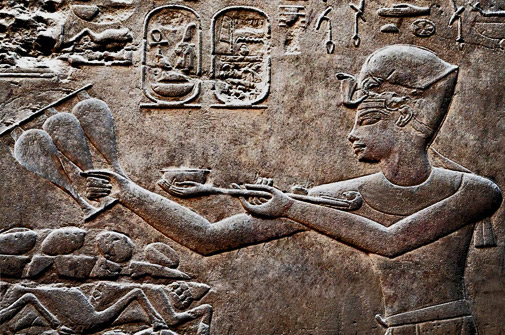
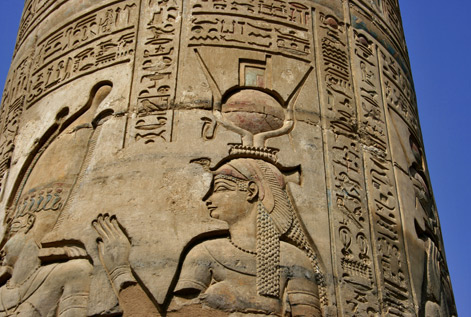

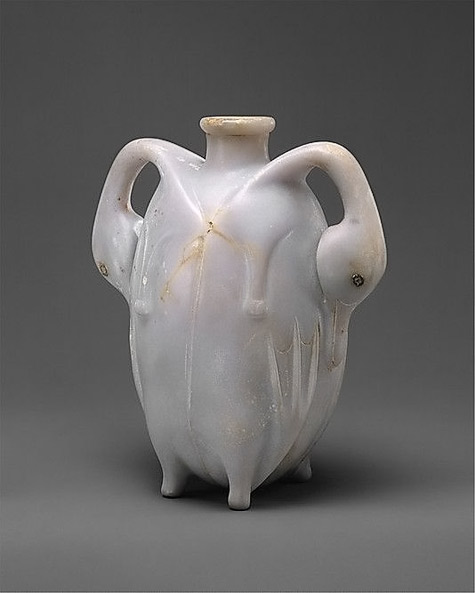
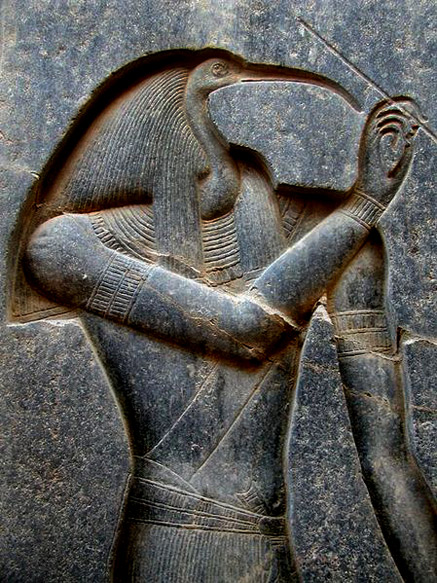
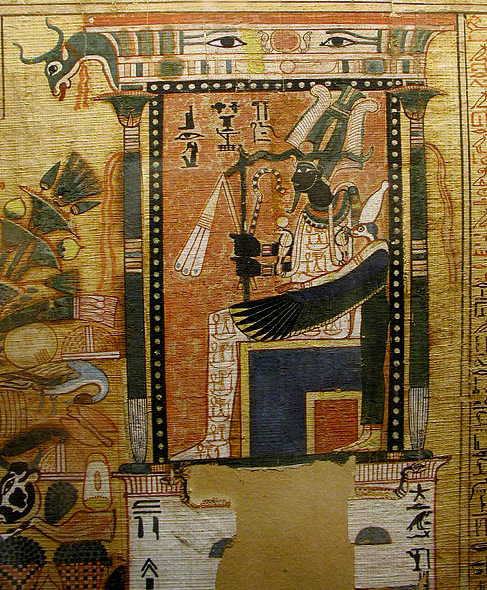
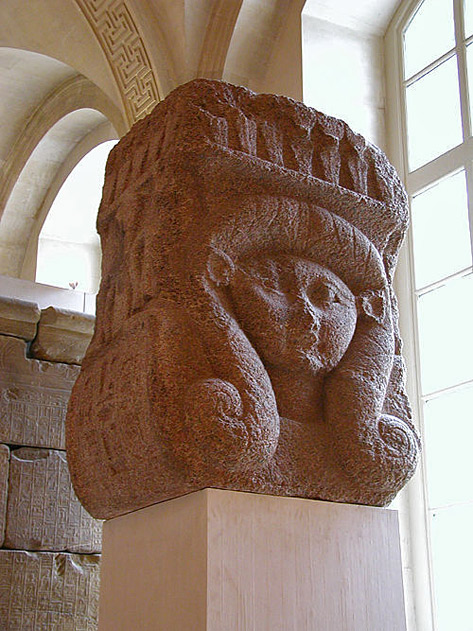
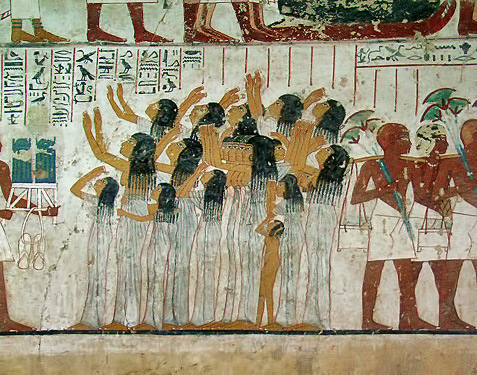
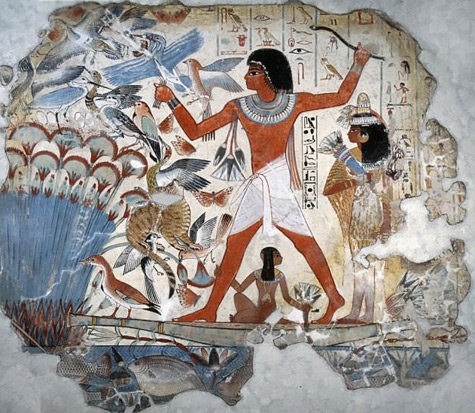
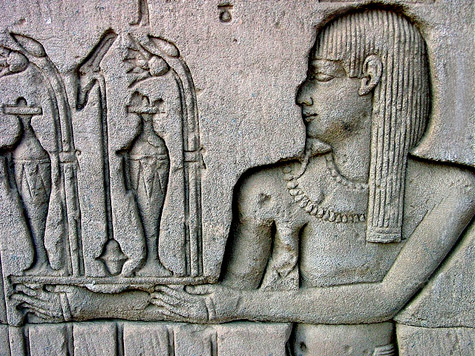
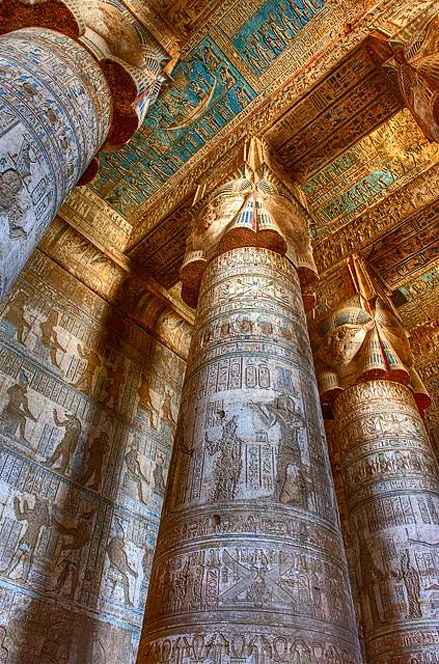
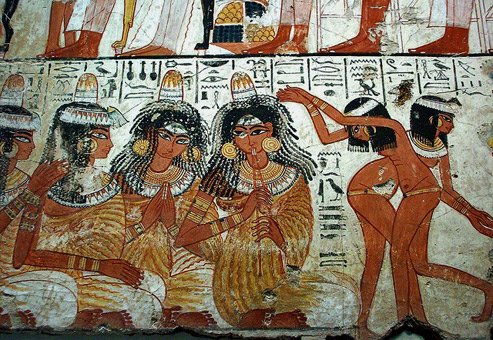
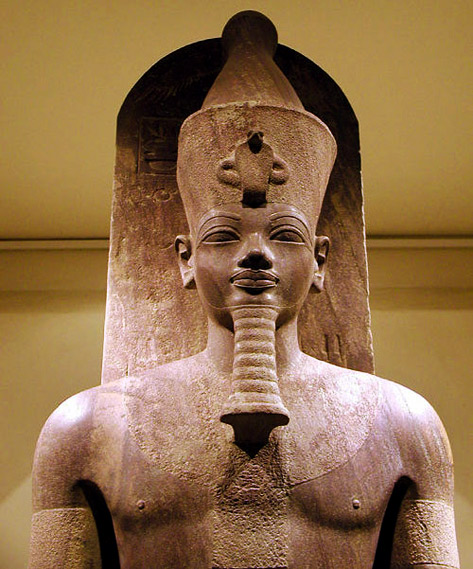
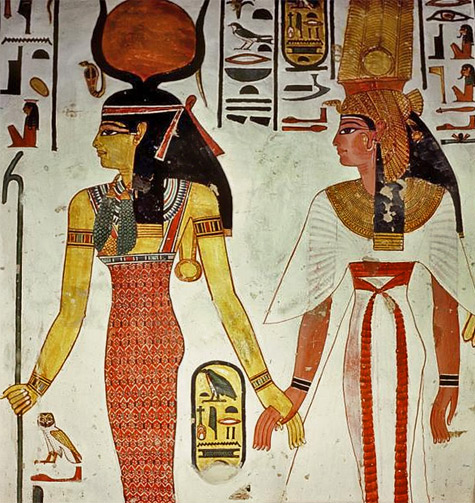
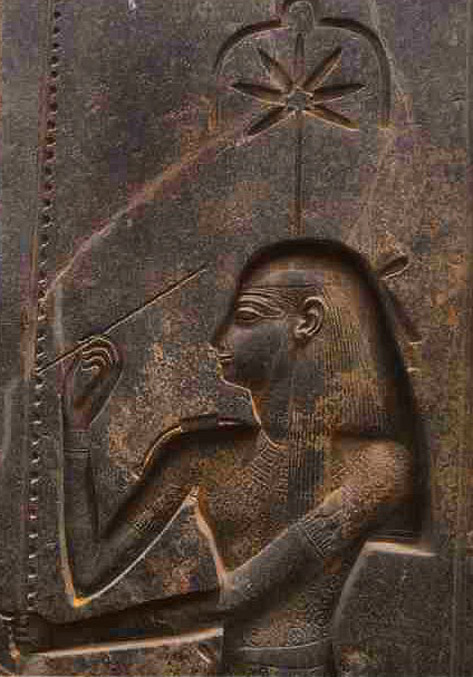
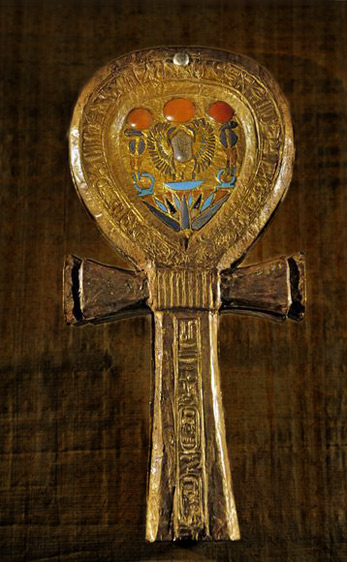
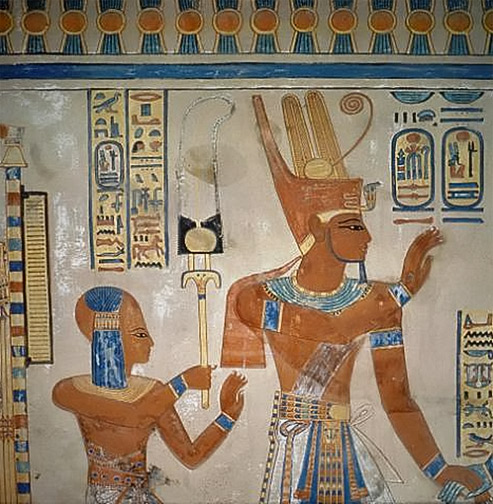
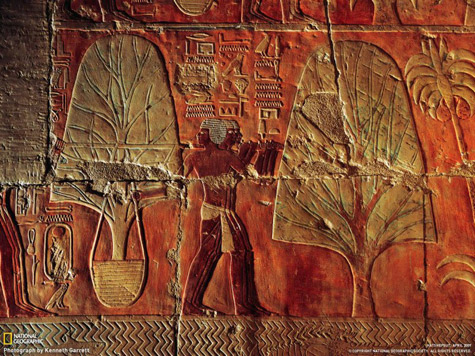
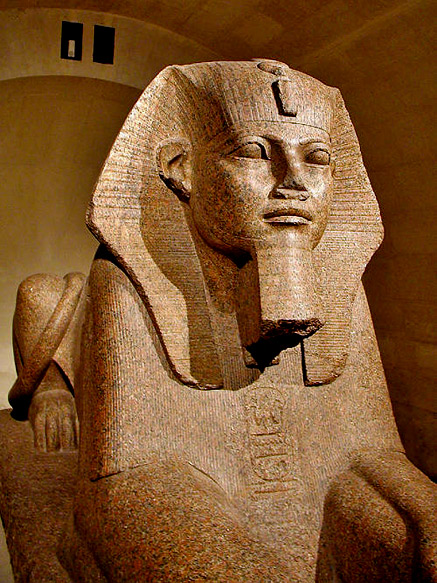
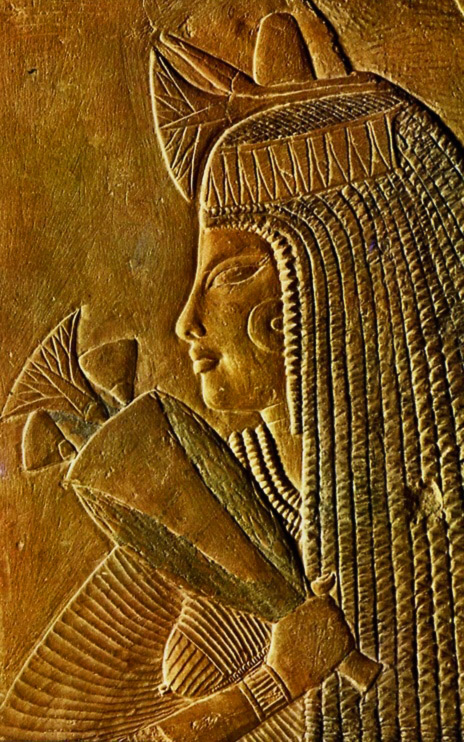
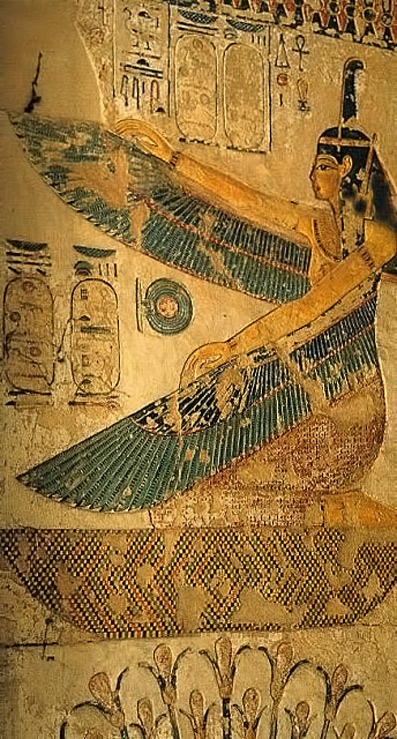
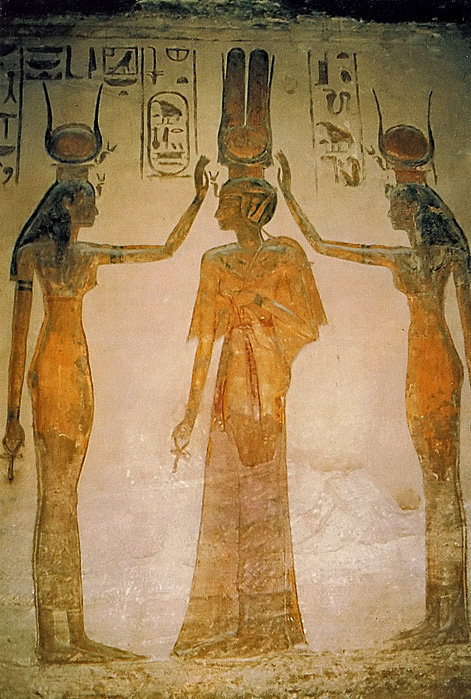
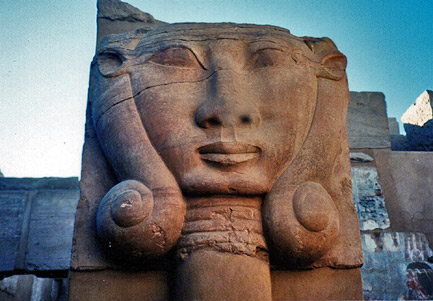
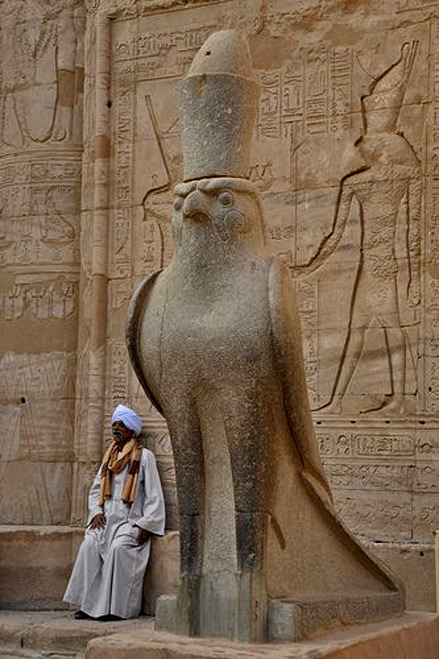
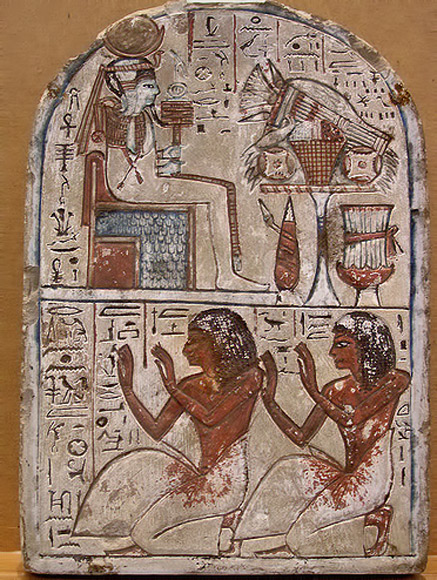
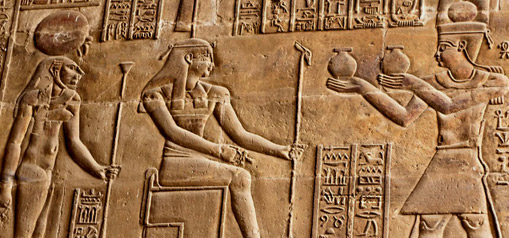
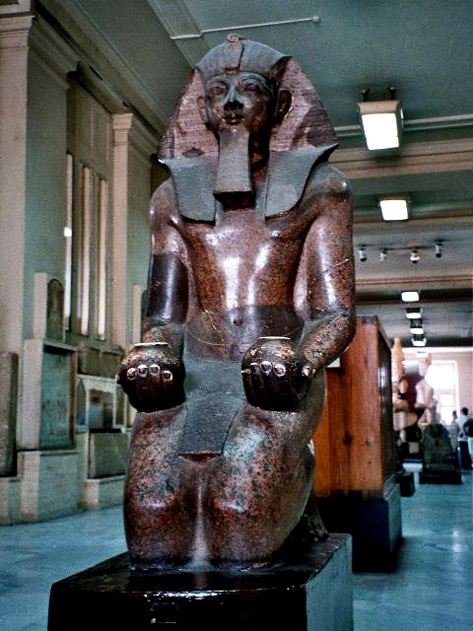
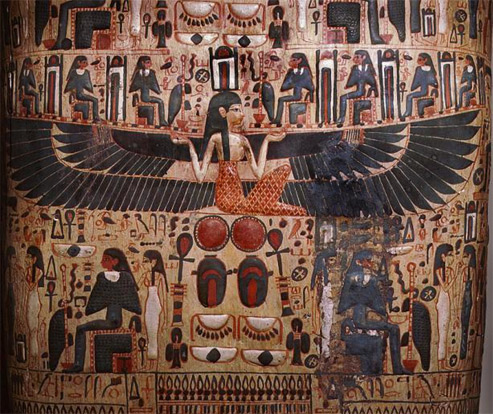
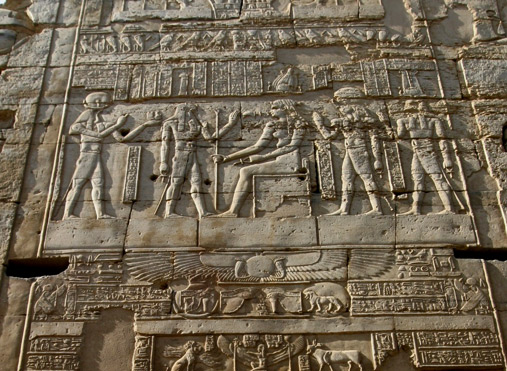

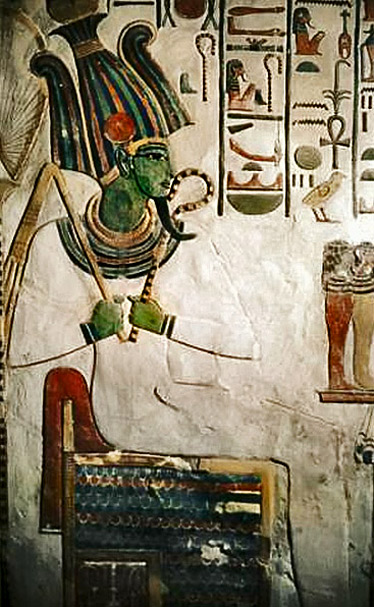
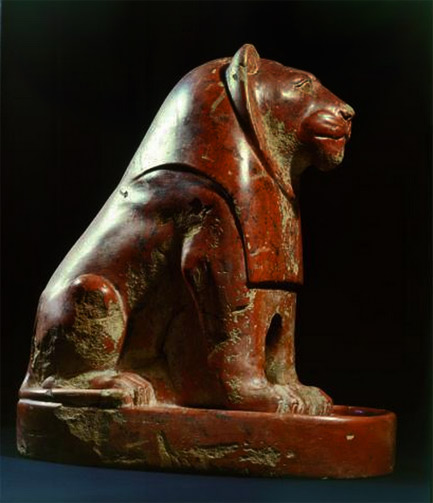
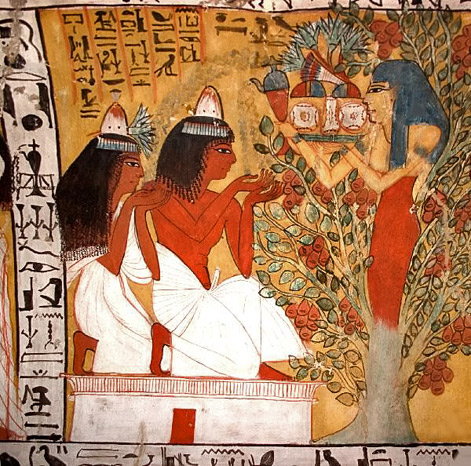
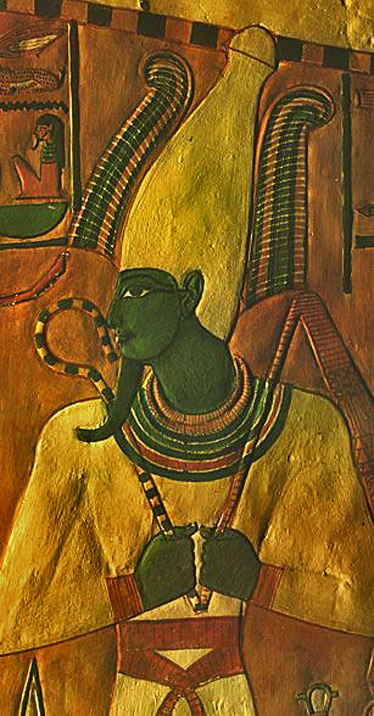
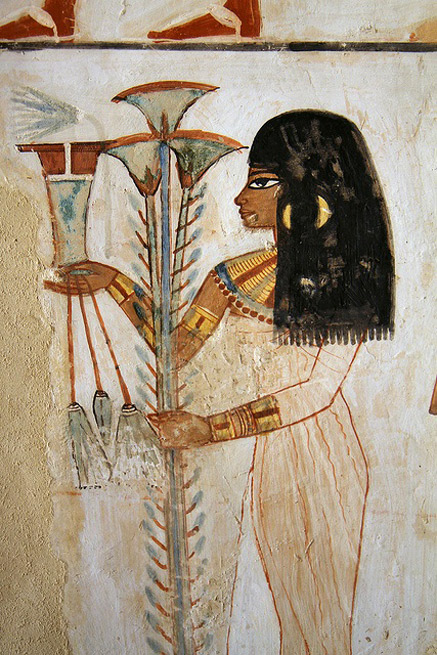
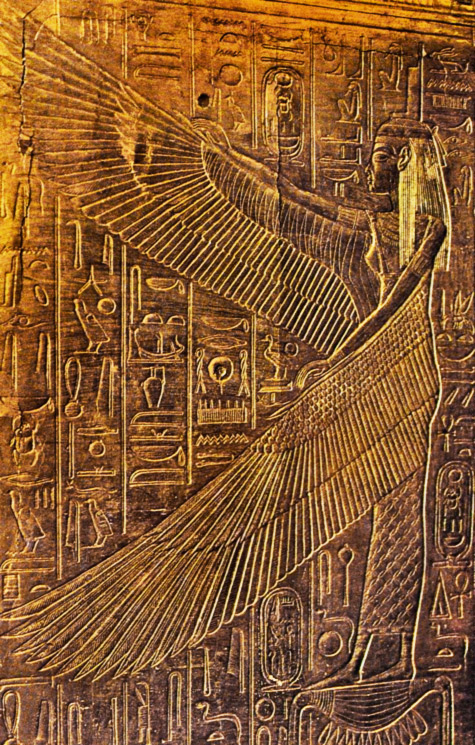
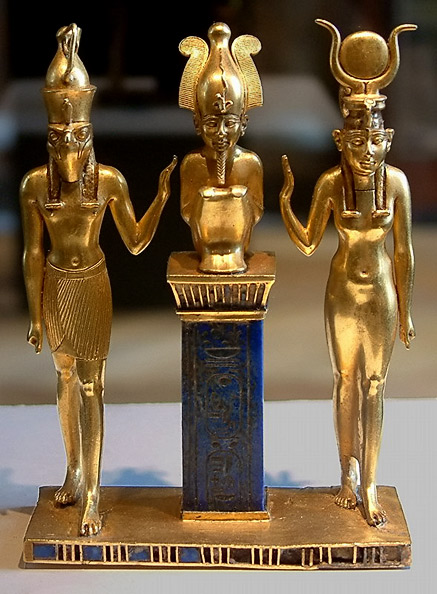
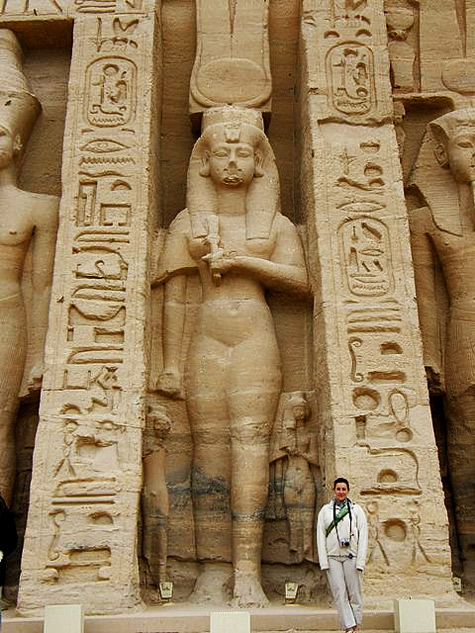
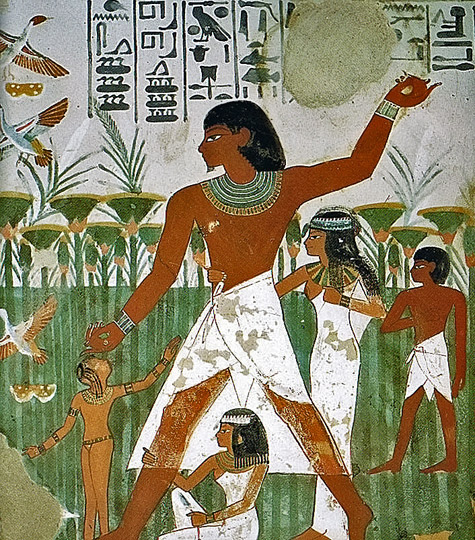
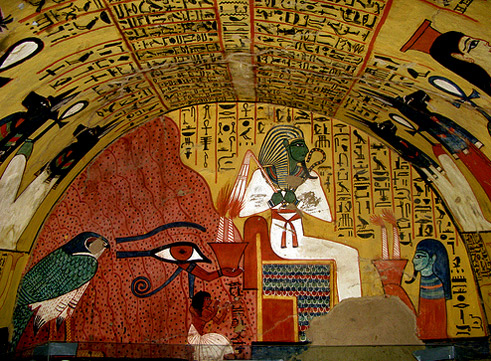
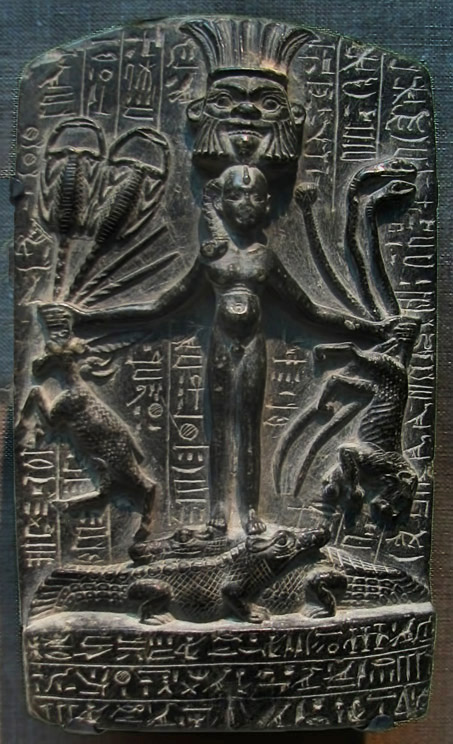
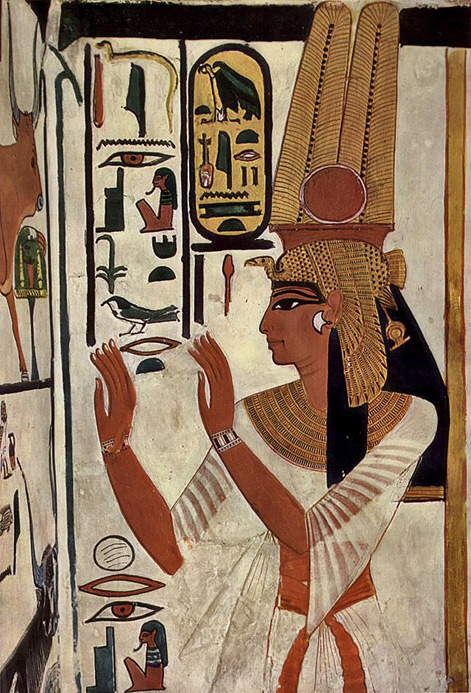
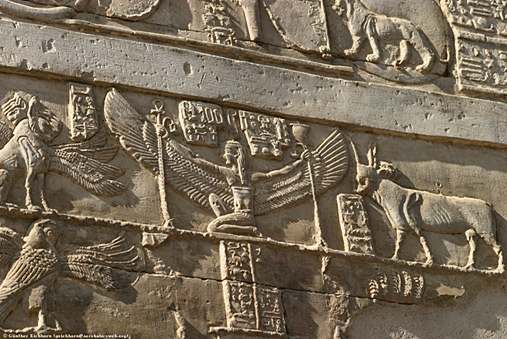
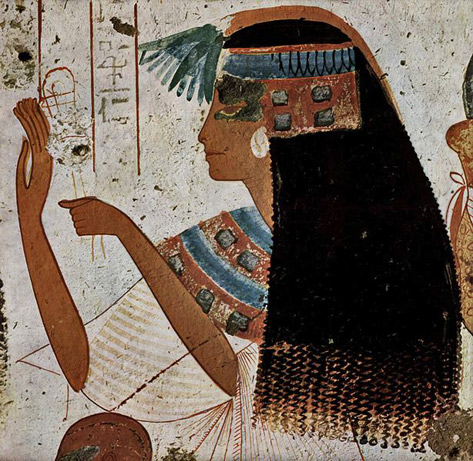

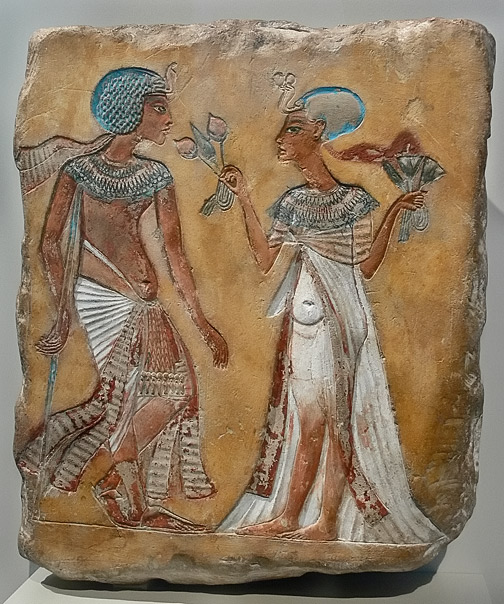
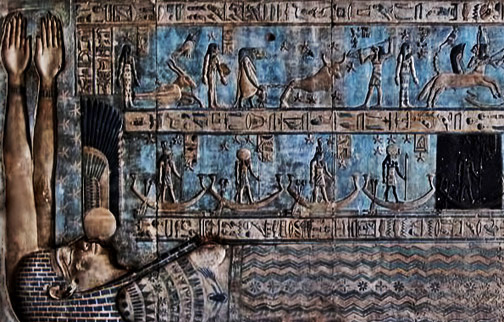
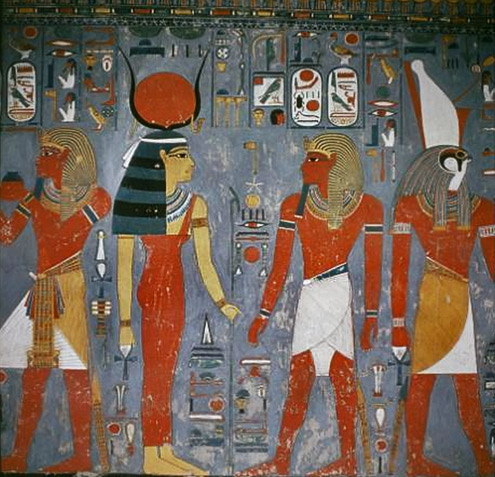
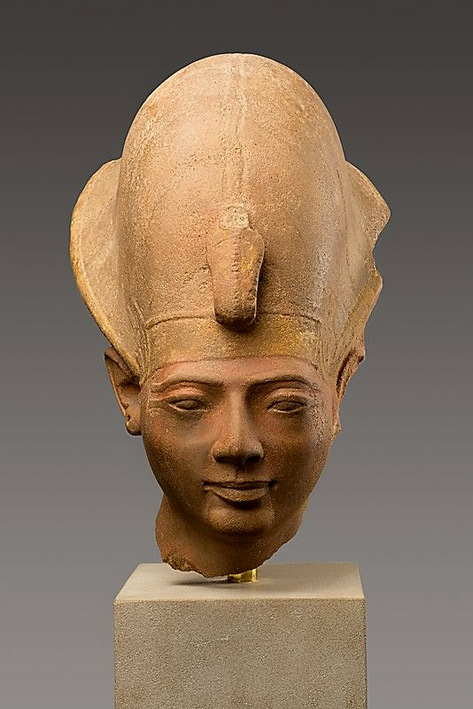
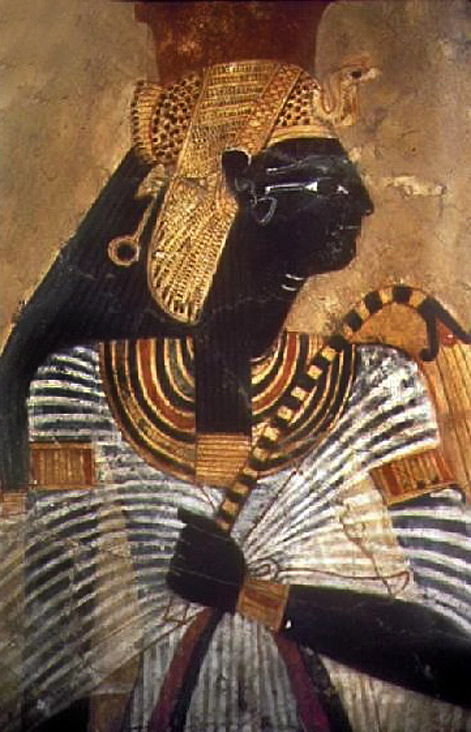
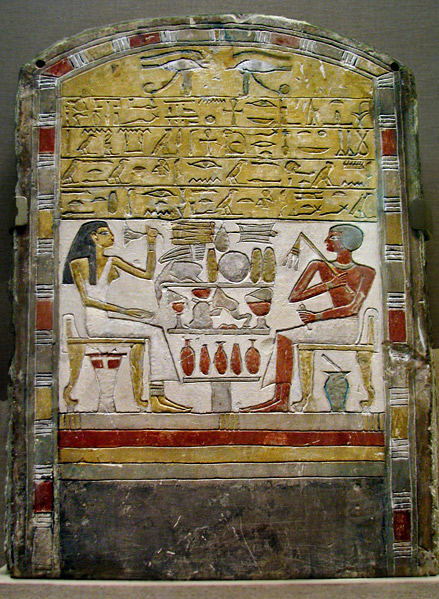
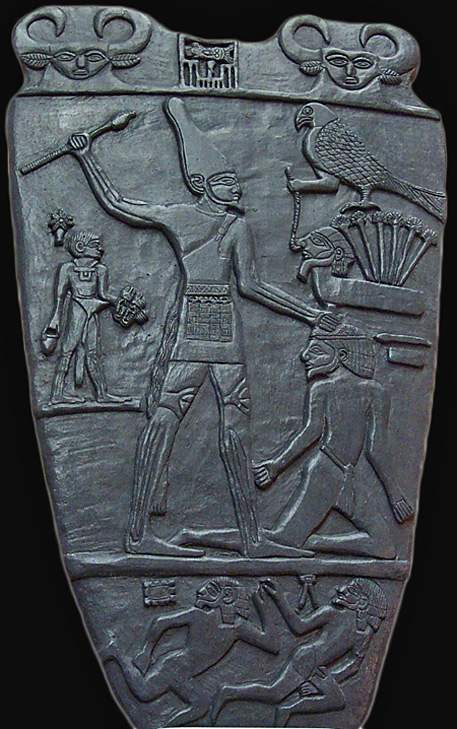
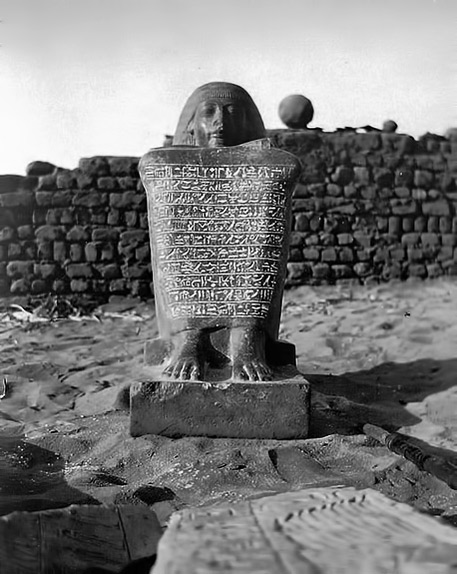
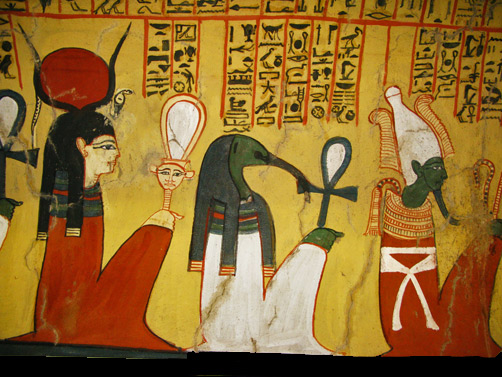
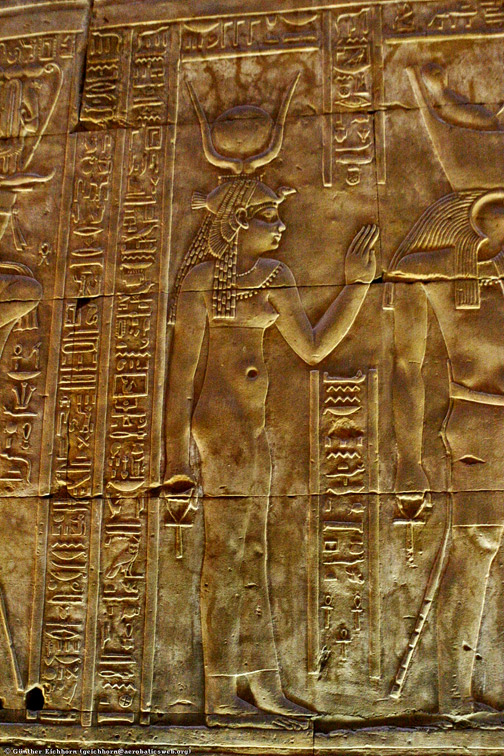
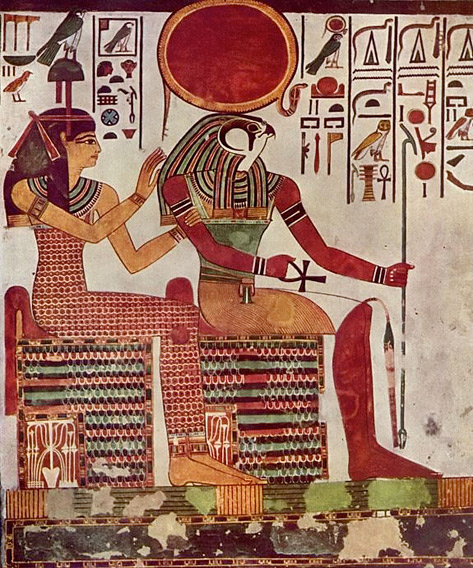
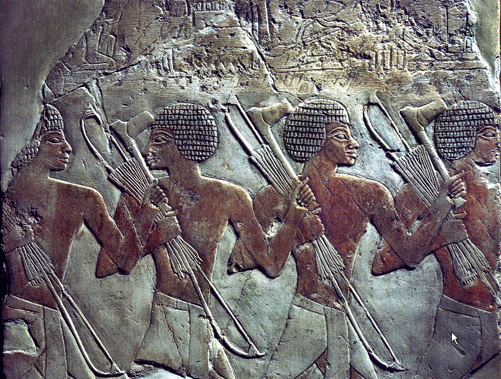
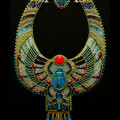
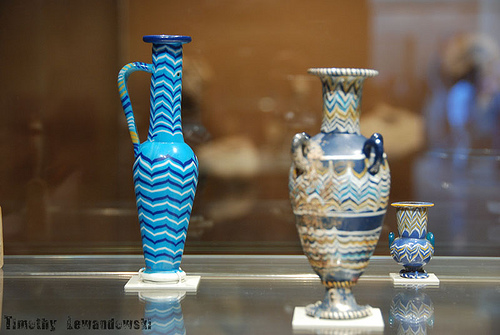
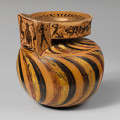
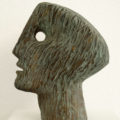


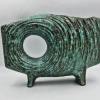
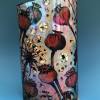
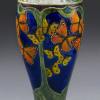





































































1 Comment
I am still impressed by the works of these great masters. Can anyone imagine walking through the great halls, seeing such beauty on the walls?
One Trackback
[…] either religious or showing the past and the things that people enjoyed doing. Most of the ancient Egyptian reliefs used to be […]